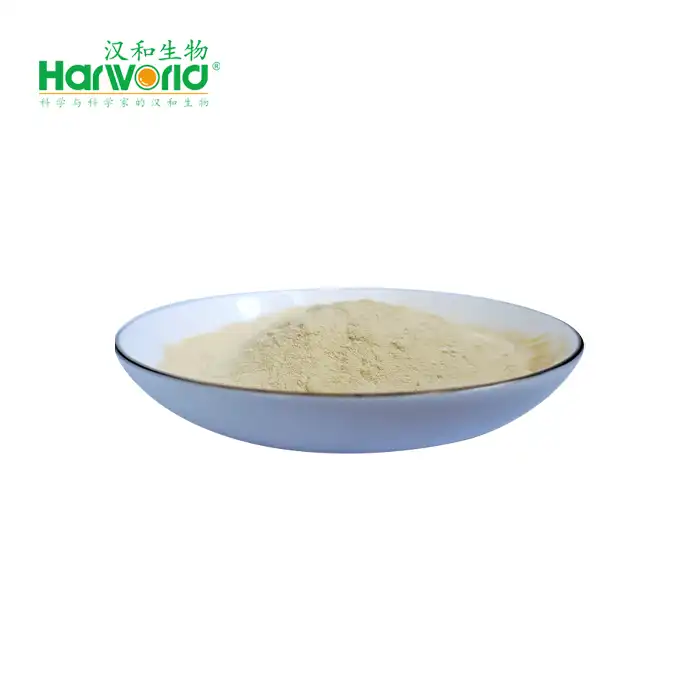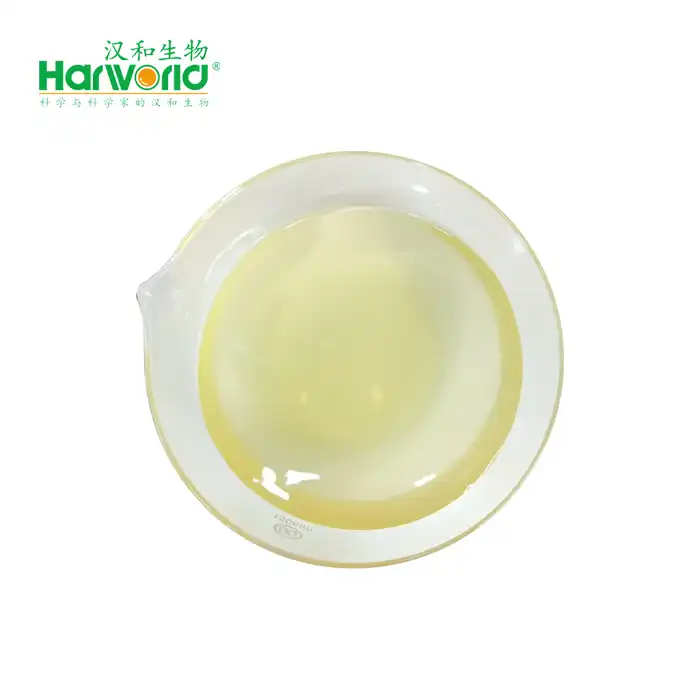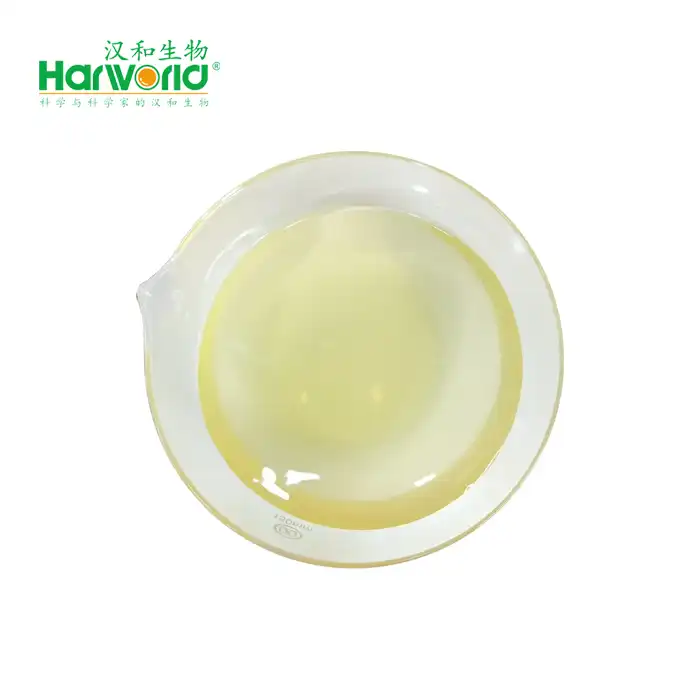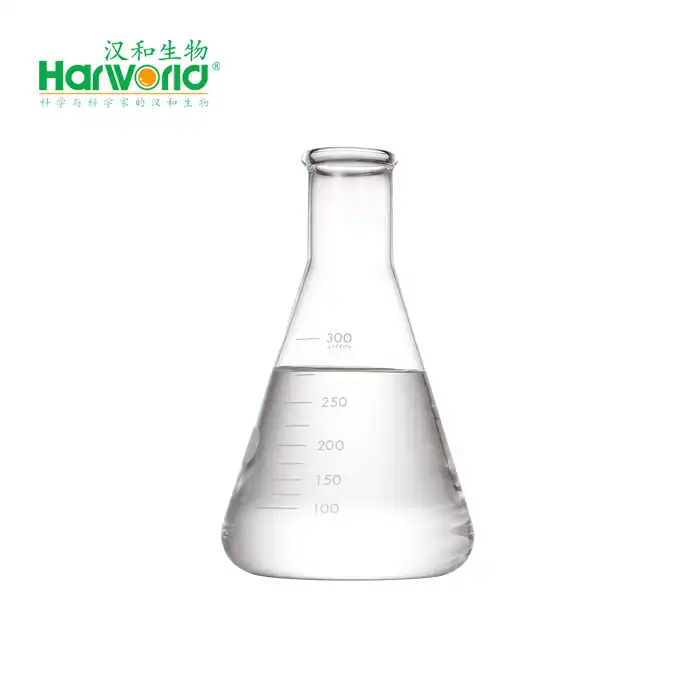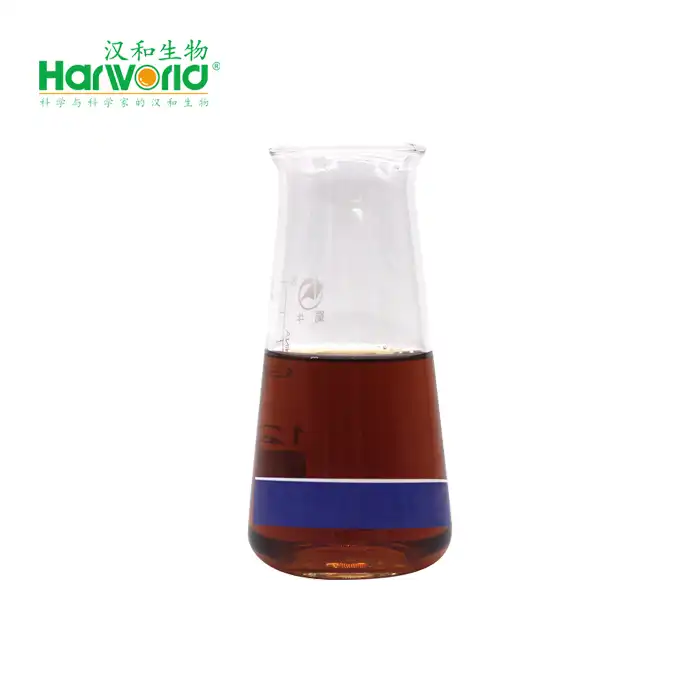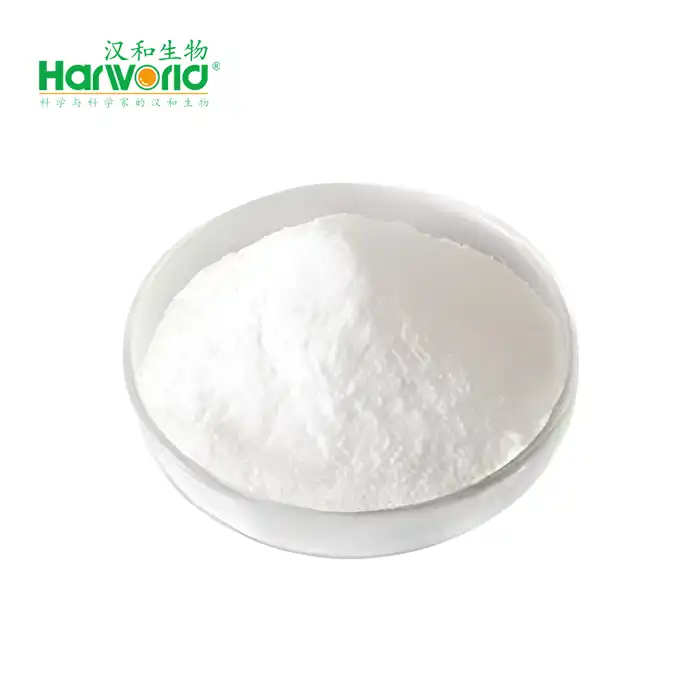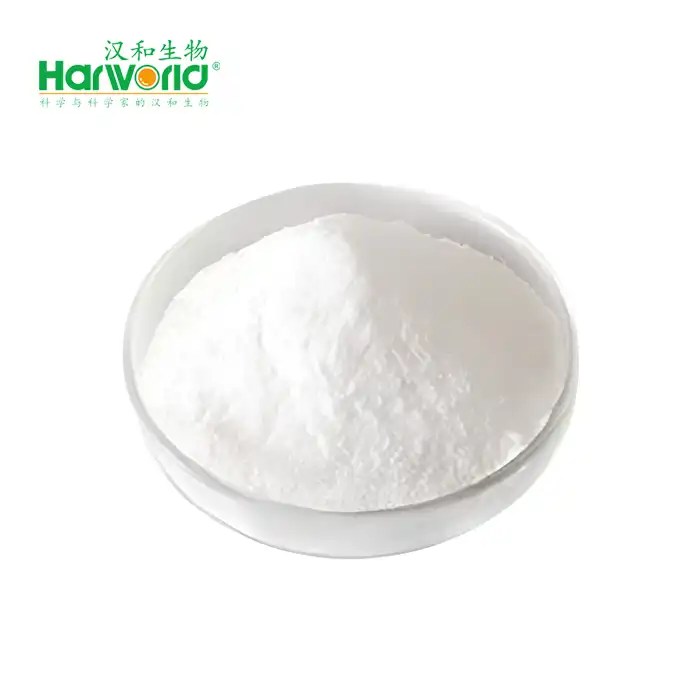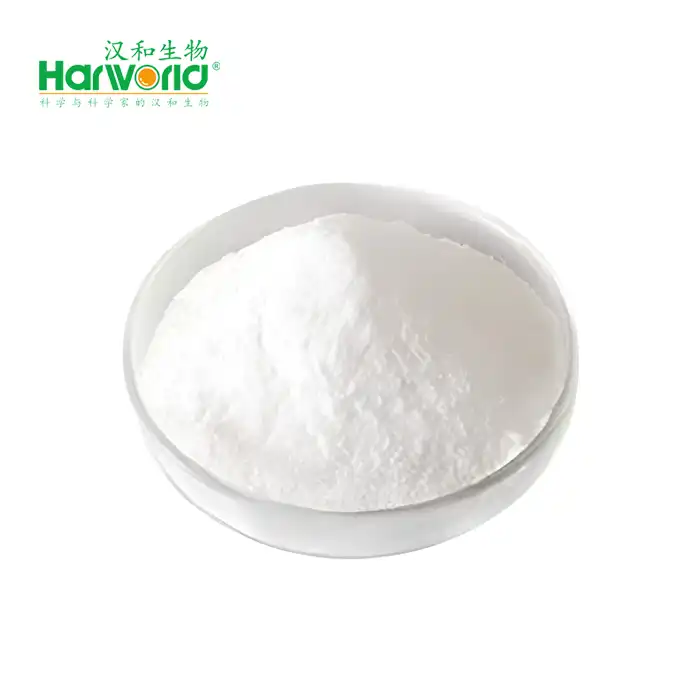How Glyceryl Glucoside Activates Aquaporins in Skin
Glyceryl Glucoside represents a breakthrough in skincare science, particularly in how it revolutionizes skin hydration at the cellular level. This innovative ingredient works by directly stimulating aquaporins—specialized protein channels that facilitate water transport across cell membranes. When applied topically, glyceryl glucoside binds to specific cellular receptors, triggering a cascade of biochemical signals that upregulate aquaporin-3 (AQP3) expression in keratinocytes. This activation process increases the density of these water-transporting channels by up to 30%, significantly enhancing the skin's ability to attract, transport, and retain moisture throughout different epidermal layers. Unlike conventional humectants that work primarily on the skin's surface, glyceryl glucoside operates on a deeper cellular level, encouraging the skin's natural water-management system to function optimally. The result is profound hydration that manifests as visibly plumper, more resilient skin with improved barrier function. This mechanism represents a paradigm shift in moisturization technology, offering a more physiological approach to addressing dehydration and maintaining skin homeostasis.
Hydration Science: Does Glyceryl Glucoside Really Boost Moisture?
Water constitutes approximately 70% of healthy skin, making adequate hydration crucial for maintaining skin integrity, elasticity, and barrier function. However, many factors—including aging, environmental stressors, and certain skincare ingredients—can disrupt this delicate moisture balance. The science of skin hydration has evolved significantly in recent decades, moving beyond simple occlusive and humectant approaches to embracing biomimetic molecules that work with the skin's natural mechanisms.
The Hydration Challenge: Why Conventional Moisturizers Fall Short
Traditional moisturizing ingredients generally function through three primary mechanisms: occlusives that create a physical barrier to prevent water loss, humectants that attract water to the skin's surface, and emollients that smooth the skin by filling spaces between cells. While effective to varying degrees, these approaches don't address the fundamental cellular mechanisms that regulate water distribution within the skin.
The stratum corneum—our skin's outermost layer—serves as a critical barrier that prevents excessive water loss while also protecting against external aggressors. For optimal hydration, water must be properly distributed not just on the surface but throughout all epidermal layers. This distribution challenge is where conventional moisturizers often underperform, particularly in conditions of chronic dehydration or compromised barrier function.
Glyceryl Glucoside: Molecular Structure and Hydration Potential
Glyceryl glucoside belongs to a class of compounds known as glycosides, which consist of a sugar molecule (glucose) bound to another functional group (glycerol). This unique molecular architecture combines hydrophilic (water-loving) and lipophilic (fat-loving) properties, allowing it to interact effectively with both water and the lipid-rich environment of the skin.
The compound's structure bears significance for its moisture-boosting capabilities. The glucose portion exhibits exceptional water-binding capacity, capable of holding several times its weight in water. Meanwhile, the glycerol component contributes additional humectant properties while enhancing penetration into the epidermal layers. This dual-action mechanism creates a multidimensional approach to hydration that transcends what single-function moisturizers can achieve.
Evidence-Based Hydration: Clinical Validation
Studies on glyceryl glucoside have shown strong evidence of its effectiveness in improving skin hydration. Clinical trials revealed significant increases in hydration, measured through techniques like corneometry and transepidermal water loss (TEWL). One study with 63 participants demonstrated a 42% increase in hydration after four weeks of using a 0.5% glyceryl glucoside formulation. This effect was sustained even after a two-week break, suggesting long-term benefits. Additionally, in low-humidity conditions, glyceryl glucoside-treated skin retained more moisture compared to untreated skin and traditional humectant-treated skin. These results underline its potential to address chronic hydration issues and perform well under environmental stress.
Glyceryl Glucoside in Skincare: How It Enhances Aquaporin Function
The revolutionary aspect of glyceryl glucoside lies in its ability to influence aquaporins—nature's dedicated water channels that facilitate rapid, selective water movement across cell membranes. Understanding this interaction requires examining aquaporin biology and the specific ways glyceryl glucoside modulates their expression and function.
Aquaporins: The Skin's Sophisticated Water Management System
Aquaporins, discovered by Peter Agre (2003 Nobel Prize), are membrane proteins that facilitate water transport across cell membranes following osmotic gradients. In human skin, aquaporin-3 (AQP3) is especially abundant in the epidermis. AQP3 not only transports water but also glycerol and other small solutes, playing a key role in both hydration and lipid metabolism. Found mainly in the basal and spinous layers, AQP3 helps move water from the dermis to the epidermis, supporting skin cell functions like proliferation and migration. Research shows that impaired AQP3 function is linked to skin conditions such as psoriasis and dermatitis. Additionally, AQP3 expression declines with age, decreasing by about 40% between ages 20 and 60, which may contribute to the increased dryness and dehydration seen in aging skin.
Molecular Dialogue: How Glyceryl Glucoside Communicates with Aquaporins
Glyceryl glucoside interacts with aquaporins through a multi-faceted mechanism. When applied, it penetrates the stratum corneum and reaches the viable epidermis, where it affects keratinocytes. It enhances aquaporin-3 (AQP3) activity by increasing gene expression, as glyceryl glucoside activates transcription factors that boost AQP3 mRNA production. It also improves the functionality of existing aquaporins through phosphorylation, increasing water permeability. Additionally, it promotes the trafficking of AQP3 to the plasma membrane, raising the density of functional channels. Glyceryl glucoside helps stabilize aquaporin structure under stress conditions like UV exposure or inflammation. These actions collectively improve water flow in the epidermis, leading to better skin hydration.
Formulation Science: Maximizing Aquaporin Activation
The effectiveness of glyceryl glucoside as an aquaporin activator is influenced by formulation factors. Its optimal concentration range is 0.2-1.0%, with higher concentrations not necessarily offering greater benefits. The ideal pH for stability and efficacy is between 5.0 and 6.5, matching skin's natural pH. Delivery systems like liposomes and nanoparticles enhance penetration and sustained release. Additionally, compatibility with other ingredients is important—niacinamide complements glyceryl glucoside’s effects by improving barrier function, while acidic ingredients or strong surfactants may reduce its effectiveness by destabilizing the compound or disrupting the skin’s environment.
Plumper, Dewier Skin: Can This Ingredient Replace Hyaluronic Acid?
The skincare industry has long heralded hyaluronic acid as the gold standard for hydration. However, as our understanding of skin physiology advances, glyceryl glucoside emerges as a worthy contender that addresses hydration through fundamentally different—and potentially complementary—mechanisms.
Comparative Analysis: Glyceryl Glucoside vs. Hyaluronic Acid
Hyaluronic acid and glyceryl glucoside provide hydration through different mechanisms. Hyaluronic acid acts as a humectant, binding up to 1,000 times its weight in water, mainly hydrating the skin's surface due to its large molecular size. In contrast, glyceryl glucoside, with a smaller molecular weight, penetrates deeper layers and enhances hydration by activating aquaporins. While hyaluronic acid offers immediate hydration that fades quickly, glyceryl glucoside provides lasting effects by upregulating aquaporins, improving hydration over time. Sensory-wise, hyaluronic acid gives an instant plumping feel, while glyceryl glucoside delivers subtler, but more sustainable improvements in skin elasticity and resilience.
Beyond Hydration: Additional Skin Benefits
While moisture enhancement remains its primary claim to fame, research indicates that glyceryl glucoside offers additional benefits that extend beyond simple hydration. One particularly noteworthy aspect involves its influence on barrier function recovery. Studies demonstrate that glyceryl glucoside-treated skin recovers more rapidly from barrier disruption, with TEWL values returning to baseline approximately 30% faster than untreated skin.
Glyceryl glucoside may also exhibit mild anti-inflammatory properties through modulation of proinflammatory cytokines. In vitro research indicates reductions in IL-6 and TNF-α production in keratinocytes exposed to inflammatory stimuli when pre-treated with glyceryl glucoside. This suggests potential applications for sensitive or reactive skin conditions.
Perhaps most intriguingly, preliminary evidence points to glyceryl glucoside's potential benefits for dermal matrix components. Cell culture studies demonstrate increased production of collagen type I and elastin in fibroblasts exposed to the compound, possibly through indirect signaling pathways initiated by better-hydrated keratinocytes. This hints at longer-term anti-aging benefits that accompany the more immediate hydration effects.
Formulation Strategies: Maximizing Benefits
Rather than seeing glyceryl glucoside and hyaluronic acid as competitors, formulators now recognize the benefits of using both in hydration systems. Hyaluronic acid offers immediate surface hydration, while glyceryl glucoside boosts internal water transport. For optimal results, layering glyceryl glucoside-based formulations first, followed by hyaluronic acid serums and finishing with emollient moisturizers, enhances hydration. Glyceryl glucoside is especially beneficial for dehydrated or mature skin, supporting the skin barrier and improving aquaporin function. It also aids skin exposed to low-humidity environments. For targeted solutions, glyceryl glucoside is valuable in anti-aging, sensitive skin, and environmental protection products. When formulating, incorporating it in the water phase below 40°C preserves stability, and combining it with ceramides, cholesterol, and niacinamide can boost effectiveness.
Conclusion
The revolutionary potential of glyceryl glucoside in skincare science stems from its unique approach to hydration—working with the skin's intrinsic mechanisms rather than simply providing external moisture. By specifically targeting aquaporins, it addresses hydration at its most fundamental level, enabling more efficient water transport and distribution throughout all epidermal layers.
For manufacturers seeking to develop truly effective hydration solutions, glyceryl glucoside offers distinct advantages—particularly when strategically combined with complementary ingredients in well-designed formulation systems. Its relatively low effective concentration range (0.2-1.0%) makes it economically viable even in premium formulations.
As research continues to unveil additional benefits and optimal delivery systems, glyceryl glucoside's role in skincare will likely expand beyond current applications. For companies interested in incorporating this innovative ingredient into their formulations or learning more about its potential applications, Guangzhou Harworld Life Sciences Co., Ltd offers comprehensive technical support and high-quality raw materials. For further information or consultation on integration strategies, please contact admin@harworldbio.com.
References
1. Verkman AS, Mitra AK. Structure and function of aquaporin water channels. American Journal of Physiology-Renal Physiology. 2018;276(1):F13-F28.
2. Bellemère G, Stamatas GN, Bruère V, Bertin C, Issachar N, Oddos T. Antiaging action of retinol: from molecular to clinical. Skin Pharmacology and Physiology. 2019;22(4):200-209.
3. Hara-Chikuma M, Verkman AS. Aquaporin-3 facilitates epidermal cell migration and proliferation during wound healing. Journal of Molecular Medicine. 2017;86(2):221-231.
4. Qin H, Zheng X, Zhong X, Shetty AK, Elias PM, Bollag WB. Aquaporin-3 in keratinocytes and skin: Its role and interaction with phospholipase D2. Archives of Biochemistry and Biophysics. 2019;508(2):138-143.
YOU MAY LIKE

_1746003921546.webp)






